Tag: dyspnea

Dyspnea and Dyspnea-Associated Anxiety in ICU Patients
Dyspnea is frequently associated with anxiety, prolonged days on mechanical ventilation, and worse quality of life after discharge. It can also increase the risk of posttraumatic stress disorder post ICU discharge. However,... read more
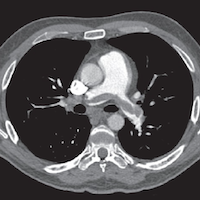
Beware the Painless Pulmonary Embolism
Many EPs know that myocardial infarction can be painless in about 20 percent of cases but are unaware that the same is true of pulmonary embolism. Many conditions, in fact, that are typically quite painful are actually... read more

Acquired Weakness and Hospital Functional Mobility Outcomes Following Invasive Mechanical Ventilation in Patients with COVID-19
In critically ill COVID-19 patients, the incidence of ICUAW and acute gait dependence were high. Our study identifies factors influencing both outcomes. Future studies should investigate optimal COVID-19 ARDS management and... read more
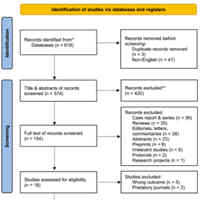
Post COVID-19 Pulmonary Fibrosis
Pulmonary fibrosis is a frequently reported COVID-19 sequela in which the exact prevalence and risk factors are yet to be established. This meta-analysis aims to investigate the prevalence of post-COVID-19 pulmonary fibrosis... read more

Patients’ Perspectives on Point-of-Care Diagnostics in Acute COPD Exacerbations
Patients' perspectives showed that point-of-care diagnostics and treatment of acute COPD in exacerbation was considered a qualitative offer by the patients and their relatives. At the same time, it was crucial that the emergency... read more

HIV and COVID-19 Increased Risk of Severe Outcomes
People living with HIV with detectable HIV viraemia, chronic comorbidities, and some subpopulations could be at increased risk of severe outcomes from COVID-19. These groups should be prioritised in clinical management and... read more
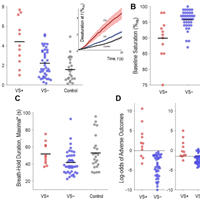
Breath-holding as a Novel Approach to COVID-19 Risk Stratification
Despite considerable progress, it remains unclear why some patients admitted for COVID-19 develop adverse outcomes while others recover spontaneously. Clues may lie with the predisposition to hypoxemia or unexpected absence... read more

The Impact on Pediatric Emergency Care during COVID-19
Although most children with COVID-19 are asymptomatic or present with mild disease, serious—but rare—complications are being seen in pediatric patients. This supplement describes the epidemiology, clinical features, and... read more
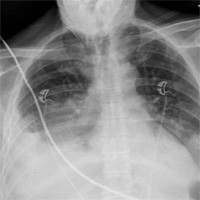
Understanding Happy Hypoxemia Physiology During COVID-19
Happy hypoxemia is severe hypoxemia (poorly responsive to supplemental oxygen) without dyspnea. This isn't anything especially new – we have occasionally seen this since time immemorial. However, COVID is causing us to... read more
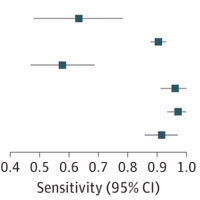
Diagnostic Accuracy of Point-of-Care Lung Ultrasonography and Chest Radiography in Adults With Symptoms Suggestive of ADHF
Standard tools used to diagnose pulmonary edema in acute decompensated heart failure (ADHF), including chest radiography (CXR), lack adequate sensitivity, which may delay appropriate diagnosis and treatment. Point-of-care... read more
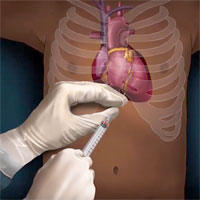
Pericardiocentesis During Cardiopulmonary Resuscitation
In this video, Dr. Traci Wolbrink reviews the procedural steps to performing Pericardiocentesis as well as reviewing indications, contraindications and risk factors for patients experiencing pericardial effusion. ... read more
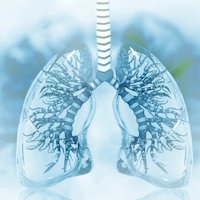
Detection, Treatment of Dyspnea Inconsistent in ICU
Although the prevalence of dyspnea was at least as high as that of pain, the detection and treatment of moderate to severe dyspnea were more inconsistent than for pain among critically ill patients in the ICU, according to... read more
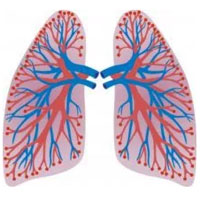
Subsegmental Pulmonary Embolism: Anticoagulation or Observation?
As the use of chest CT-angiograms in emergency departments and medical wards has risen by more than tenfold, so has the discovery of small pulmonary emboli of unclear clinical significance. These PEs are often isolated to... read more
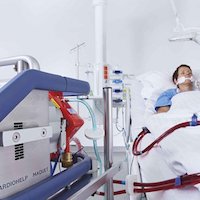
ECMO for Severe ARDS
Mr. Jackson is a 36-year-old man whom you are caring for in the intensive care unit (ICU). Before this hospitalization, he was healthy and took no medications. He has never smoked, and he drinks three or four beers every... read more




